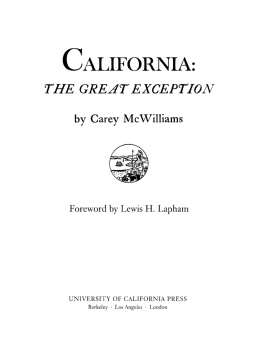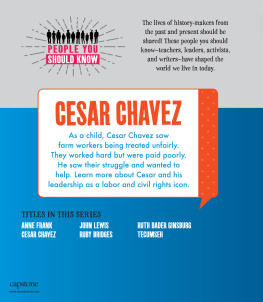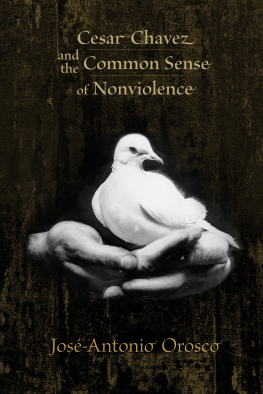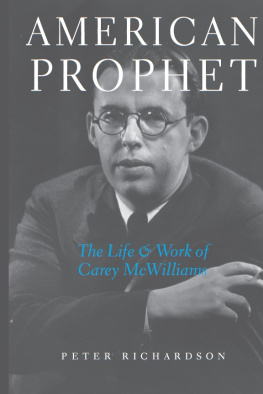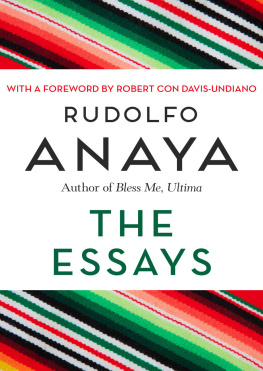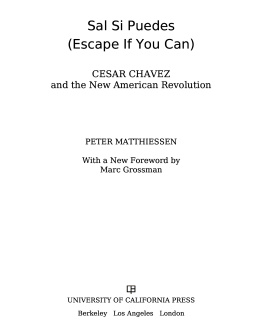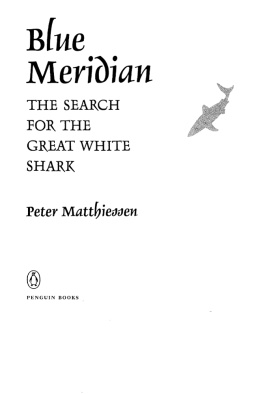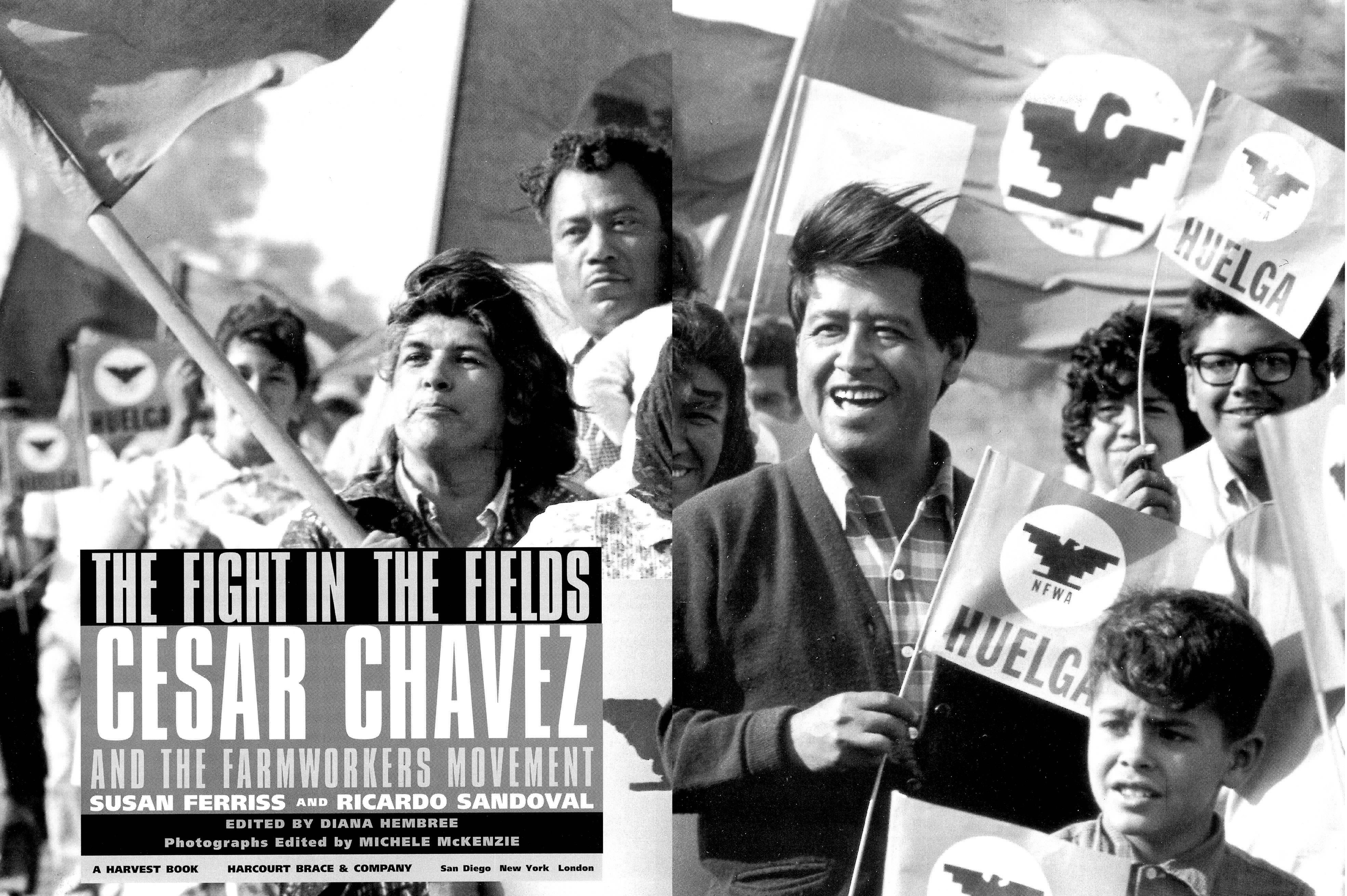
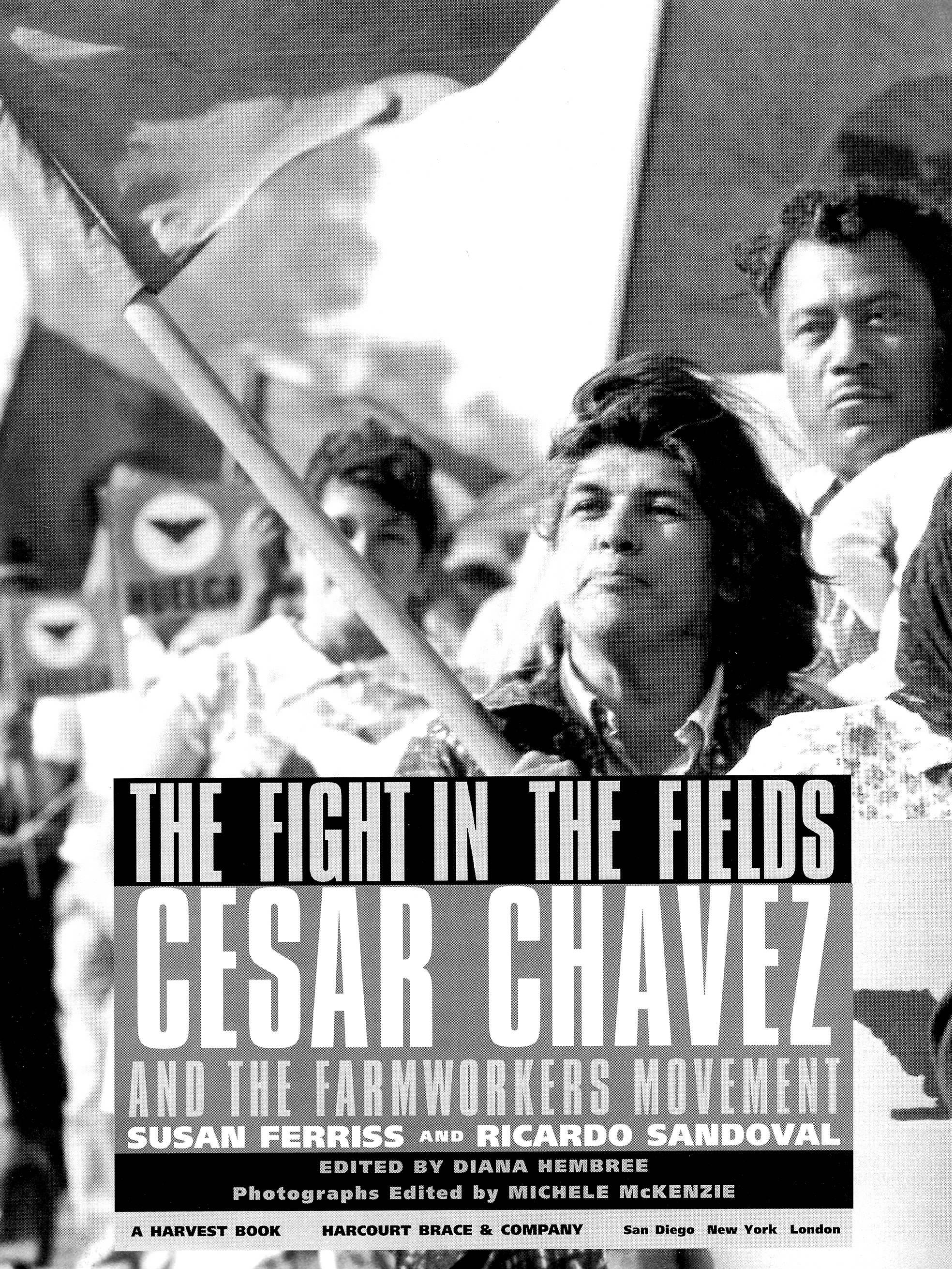
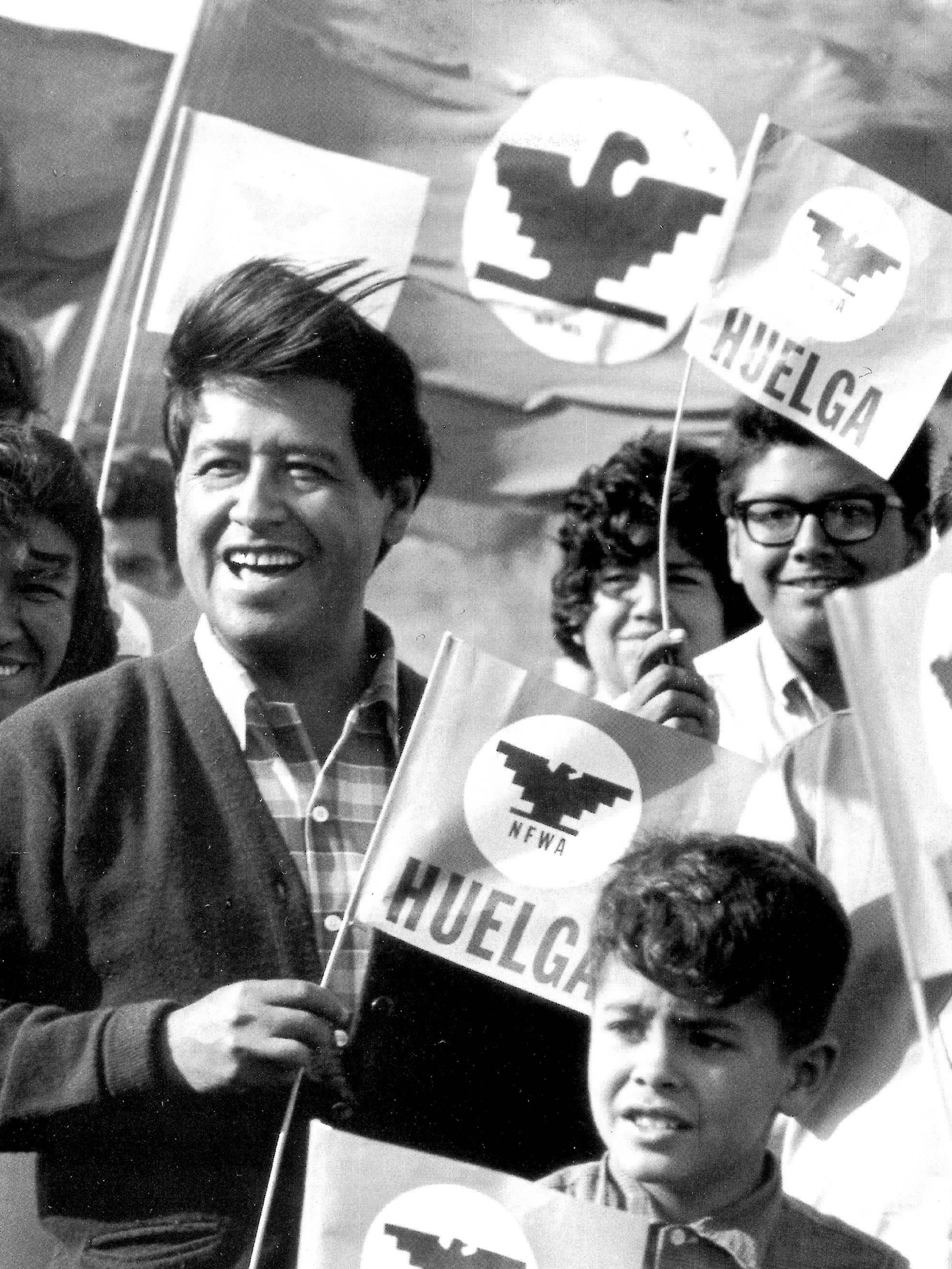
THE FIGHT IN THE FIELDS
CESAR CHAVEZ
AND THE FARMWORKERS MOVEMENT
SUSAN FERRISS AND RICARDO SANDOVAL
EDITED BY DIANA HEMBREE
Photographs Edited by MICHELE M c KENZIE
A HARVEST BOOK HARCOURT BRACE & COMPANYSan Diego New York London
Copyright 1997 by Paradigm Productions, Inc.
All rights reserved. No part of this publication may be reproduced
or transmitted in any form or by any means, electronic or mechanical,
including photocopy, recording, or any information storage and
retrieval system, without permission in writing from the publisher.
Requests for permission to make copies of any part of the work should
be mailed to : Permissions Department, Harcourt Brace & Company,
6277 Sea Harbor Drive, Orlando, Florida 32887-6777.
Library of Congress Cataloging-in-Publication Data
Ferriss, Susan.
The fight in the fields: Cesar Chavez and the Farmworkers movement/by
Susan Ferriss and Ricardo Sandoval; edited by Diana Hembree.1st ed.
p. cm.
Includes bibliographical references and index.
ISBN 0-15-100239-8 ISBN 0-15-600598-0 (pbk.)
1. Chavez, Cesar, 19271995. 2. United Farm WorkersHistory. 3. Labor
leadersUnited StatesBiography. 4. Trade-unionsMigrant agricultural
laborersUnited StatesHistory. 5. Mexican American migrant agricultural
laborersHistory. I. Sandoval, Ricardo. II. Hembree, Diana. III. Title.
HD6509.C48F47 1997
331.88'13'092dc21 96-40375
[B]
Text set in Galliard and Frutiger Black
Display text set in Dante and OptiElizabeth
Designed by Camilla Filancia
Printed in the United States of America
First Harvest edition 1998
N M L K J I
Contents
LIST OF GUEST ESSAYS
PREFACE
ACKNOWLEDGMENTS
FOREWORD
INTRODUCTION
CHAPTER ONE: THE LAST FAMILY FARM
CHAPTER TWO: SAL SI PUEDES
CHAPTER THREE: DELANO
CHAPTER FOUR: HUELGA!
CHAPTER FIVE: BOYCOTT
CHAPTER SIX: BLOOD IN THE FIELDS
CHAPTER SEVEN: WITH THE LAW ON OUR SIDE
CHAPTER EIGHT: THE POISONED EAGLE
CHAPTER NINE: A PINE COFFIN
EPILOGUE
NOTES
SELECTED BIBLIOGRAPHY
CREDITS
STAFF
INDEX
ABOUT THE AUTHORS
LIST OF GUEST ESSAYS
VICTOR VILLASEOR "We're Human Beings, Not Dogs!"
SUSAN FERRISS and RICARDO SANDOVAL Remembering Fred Ross
CAREY M c WILLIAMS The Zoot Suit Riots
ERNESTO GALARZA The Braceros
CARLOS BULOSAN My Crime Is Being Filipino in America
ALFREDO VA, JR. Zeferino's Fathers
MAX BENAVIDEZ Chavez and El Teatro Campesino
DEMETRIO DIAZ Diary of a Strikebreaker1974
JANE KAY and BERNABE GARAY A Migrant Harvester's Letters Home
CESAR CHAVEZ An Open Letter to the Grape Industry
JACK KING Chavez and the UFW: A View from the California Farm Bureau
SUSAN FERRISS and RICARDO SANDOVAL The Death of the Short-Handled Hoe
HELENA MARIA VIRAMONTES The Spraying
MAX BENAVIDEZ Chavez's Legacy: He Nurtured Seeds of Art
PETER MATTHIESSEN Postscript, 1993: Remembering Cesar Chavez
JOSE ANTONIO BURCIAGA The Peasant and the Pauper
RUDOLFO ANAYA Elegy on the Death of Csar Chvez
Map of California follows index
Preface
I N 1989, the two of us, Rick Tejada-Flores and Ray Tellesboth filmmakers and old friendscame together with a shared set of concerns about telling stories on television that weren't being told. One of the most important stories, and one of the most neglected, was that of Cesar Chavez and the farmworkers movement. Although neither one of us came from the fields, we found that in many ways, the farmworkers' struggle had shaped who we were and how we viewed the world.
Ray Telles's deep interest in the farmworkers movement was rooted in his family: "My father and uncle, both electricians, went to Delano to help out in the early days of the union. As a college student I became involved in the Chicano movement and, like many, I came to recognize Cesar as a major force in determining its direction. Later, as a journalist covering the farmworkers, I was able to draw on this background to do stories that were both close to home and very important to my family. When I made films on the toll exacted on farmworkers by pesticides or on the UFW's battles with a hostile state government, the specific problems were new, but the stories were all too familiar."
Rick Tejada-Flores worked as a volunteer for the UFW, taking pictures for the union and later creating the union's first documentary film. "Those two years with the union were a defining experience in my life. Like so many people who came into contact with Chavez and the farmworkers, I was indelibly changed by the process. Although it was the start of my work as a filmmaker, the real lessons that I learned were about how society works and how it can be changed."
The UFW's story, which had touched both of our lives so profoundly, is the story of how ordinary people can become extraordinary, how the powerless can exert influence, and how the voiceless can be heard.
Cesar Chavez was the most important Latino leader this country has ever seen. Part of his greatness was that his vision reached out to touch millions of Americansnot just Mexican Americans, but ordinary people of all sorts. The connection that the farmworkers forged between the haves and the have-nots created a remarkable moment in American historyan era in which people who would not normally meet connected and worked together to correct terrible injustices.
The film and the book are an attempt to capture the intensity and focus of this remarkable movement and to help people learn its powerful lessons. With the death of Cesar Chavez in 1993, there is an urgency to preserve these memories while they are still freshbut not because Chavez's death was the end of the story. The farmworkers movement is flourishing today, and all across the country there has been an outpouring of honors for the man who inspired it. But unless people remember what Cesar Chavez believed in and dedicated his life to, this belated respect will be an empty gesture.
It was clear from the start that no matter how good a film we made, there would be many stories and issues that we could not include. Hence this book, a rich biography of both Chavez and the farmworkers movement from its birth to its present renaissance. The book's editorial teamwriters Susan Ferriss and Ricardo Sandoval, editor Diana Hembree, photo editor Michele McKenzie, and researcher Juan Avila Hernandezall share our vision and concern. Their work has developed its own path and its own voice. As you read The Fight in the Fields, their words and images will open the doors to another world.
R ICK T EJADA -F LORES
R AY T ELLES
1996
Acknowledgments
W RITING ABOUT farm labor has been a passion for us for many years. We are grateful to Ray Telles and Rick Tejada-Flores for inviting us to write this book in conjunction with their documentary film, The Fight in the Fields, and for offering us a wealth of resources to use. Many thanks as well to our hardworking colleagues on the book team and our editor at Harcourt Brace, Walter Bode, assistant editor Theo Lieber, managing editor Marianna Lee, copy editor Rachel Myers, production director David Hough, designer Camilla Filancia, and the rest of the editorial and production staff; Gary Soto, who wrote the foreword; and Sandra Dijkstra, our agent. We are also grateful to our editors and fellow reporters at the
Next page

